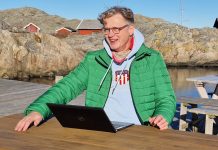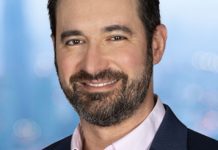What products does The Crosby Group offer the renewable energy sector?
At The Crosby Group, we have one of the largest rigging equipment offerings in the world. We are a manufacturer of below-the-hook lifting components, load monitoring equipment, and mooring products. As you think about lifting components in the construction, maintenance, and service world of wind, you are going to be dependent on safe rigging equipment to connect your load to the crane. That’s where The Crosby Group comes into play.
Our expertise is in forging those lifting components that you see as connecting points or parts of slings, that you see lifting blades, turbines, nacelles, and tower sections. Our forging experience goes back hundreds of years. Our Gunnebo Industries brand was formed in 1764 in a small forge operation in Sweden. Crosby goes back to 1880 with the manufacturing of the wire rope clip in the U.S. With that rich history, even to today we have maintained highly vertically integrated manufacturing operations. We’ve expanded our global footprint with operations in the United States, Canada, and various countries in Europe, including the U.K., The Netherlands, Sweden, France, Norway, and Germany.
What does that mean for wind?
We see our product used in all parts of the life cycle of a wind farm. From construction to maintenance and repowering, The Crosby Group lifting equipment will be used in many applications. Whether it’s attaching as lifting points to tower sections, monitoring the weight of a load, or even in long-term mooring applications, our portfolio has a broad use throughout the lifting and rigging of wind-farm components.
Most people will be familiar with our products in the construction of wind farms. As an example, we have one of the widest ranges of shackles that will be used in conjunction with slings to lift tower sections, blades, nacelles, and rotors. For wind, we like to believe that our long history in manufacturing, vertical integration, and transparency gives contractors and crane operators peace of mind. When you are lifting multi-million-dollar equipment hundreds or thousands of feet in the air, you want to know that a company like The Crosby Group has your back with quality rigging equipment.
What recent developments highlight The Crosby Group’s commitment to offshore wind?
We’ve partnered with quite a few end users from construction firms to unions to train in safe rigging. In 2020, we developed and launched a “fundamentals of rigging” course geared toward offshore wind construction. For the last 20 years, The Crosby Group has had industry-leading training programs on heavy lift, offshore and onshore rigging applications, and train the trainer programs. So, it was a natural fit for us to develop a fundamentals course aimed at offshore wind. In this course, students will learn about risk management, riggings plans, and basic principles when using wire rope, chain, and synthetic slings with Crosby hardware.
2020 was an interesting year to launch such a program. With COVID, there was an obvious transition to doing more training virtually. We’ve put together a few programs and content to help address that gap, but there really is no good substitute for in-person training. With that in mind, we looked for opportunities to partner with end users in the offshore wind market to sneak in some in-person training when it was safe. We see a real need to educate end users in offshore wind construction, particularly in North America. The European market, as an example, is more mature and well developed when it comes to rigging in offshore wind. However, there is a real demand in North America for rigging education in this space.
Do you see the European model being used in the U.S. as we go forward?
I think so. We’ve seen a few organizations like the Global Wind Organization organizing a footprint here in the U.S. They have had a lot of success in Europe, which is where the market really has been strong. Rigging training geared toward offshore wind is something that will continue to grow, particularly in the U.S. We will be working with various partners, like our distribution network, to help establish that footprint. So, yes, I think you’ll see a European model that hopefully gets adopted here in the U.S. as this market starts to pick up.
What about The Crosby Group makes it uniquely suited to address these challenges that offshore wind presents?
When you think about lifting equipment and installing equipment in the ocean, you’ve got a market or an environment that is very similar to offshore oil and gas. While the components you are lifting are obviously different, basic safety principles and the equipment used to lift are going to very similar. Offshore oil and gas is an area that we have been successful in when it comes to training and supplying quality product. Whether it is a heavy-lift product, mooring, or load monitoring, Crosby’s heritage and the vast amount of experience that we have translates well.
Since offshore wind is still “new” to The Crosby Group as well, how are you working to increase your knowledge and experience?
Increasing our knowledge in any market is about starting with end users. When we decided we needed to know more about offshore wind, we reached out to our industry partners to get to know what problems they faced in lifting and rigging for offshore wind construction. As we had those conversations, we identified a number of opportunities that we could support. People wanted to know what their loads weighed, so we had a solution in our Crosby Straightpoint load monitoring product line as an example. Another opportunity was the training needs for basic rigging skills, which we can absolutely support.
There were other opportunities for us to learn about the market where we didn’t have a presence. One of those opportunities was to form a partnership with Verton, which we recently announced. Verton has a phenomenal product that eliminates the need for tag lines when lifting with a crane. They are also working on a specific product for wind that enables crane operators to position a load remotely in high wind environments. That partnership has built on Verton’s product expertise and our deep connection in the rigging industry.
What ways does The Crosby Group offer expertise in raising awareness for a well-trained workforce?
Training is a part of our heritage. There’s no other lifting and rigging manufacturers in our space that promote and offer the portfolio of training that we do. It’s as important to us to provide safe rigging equipment as it is to ensure that users of our equipment are adequately trained. We are very fortunate to have a distribution network that feels the same way. It’s our shared objective to ensure that rigging training and product is widely available to the offshore wind market.
So, what makes us well equipped to develop and promote training? We have members of our training, engineering and even our sales teams that sit on various rigging industry boards and committees. We use our product knowledge and industry service experience to develop our training programs. When we go in and we train on how to make a safe lift, what type of equipment selections you should be making, we are already in front of those industry standards as they evolve.
Part of what we do with that knowledge revolves around our “train the trainer” program. We have what we call a Rigging Trainer Development Course that focuses on equipping people to pass on rigging knowledge. Ensuring that the wind industry is equipped with not only competent, qualified riggers but also trainers is key to a well-trained work force. In a year prior to COVID, we trained somewhere in the range of 10,000 to 15,000 people a year. We are excited to bring that knowledge and reach to the wind market.
As offshore wind continues to develop in the U.S., how has The Crosby Group conditioned itself to further that goal?
To further the goal of offshore wind development in the U.S., we have continued to work with our distribution partners on addressing both product and rigging application needs of the industry. That’s why we’ve been doing a lot of virtual training about our products and applications. It’s an interesting transition to take some of the product that people have used for 100-plus years and apply that to construction and maintenance in offshore wind.
You can see that some of that content in our Crosby “Ask the Expert” podcast series that we have done. In that series we address a number of questions from end users. We talk about what components to use in offshore applications, how to avoid mooring fatigue, and hydrogen embrittlement — all topics relative to offshore wind.
There’s an old saying that in a project you can only pick two of doing something fast, cheap, or good. We emphasize that in application use and product selection that SAFE is actually the first and most important part of a project. We are happy to partner with our distribution network and our shared end users to promote that in the offshore wind industry.
More info www.thecrosbygroup.com






























